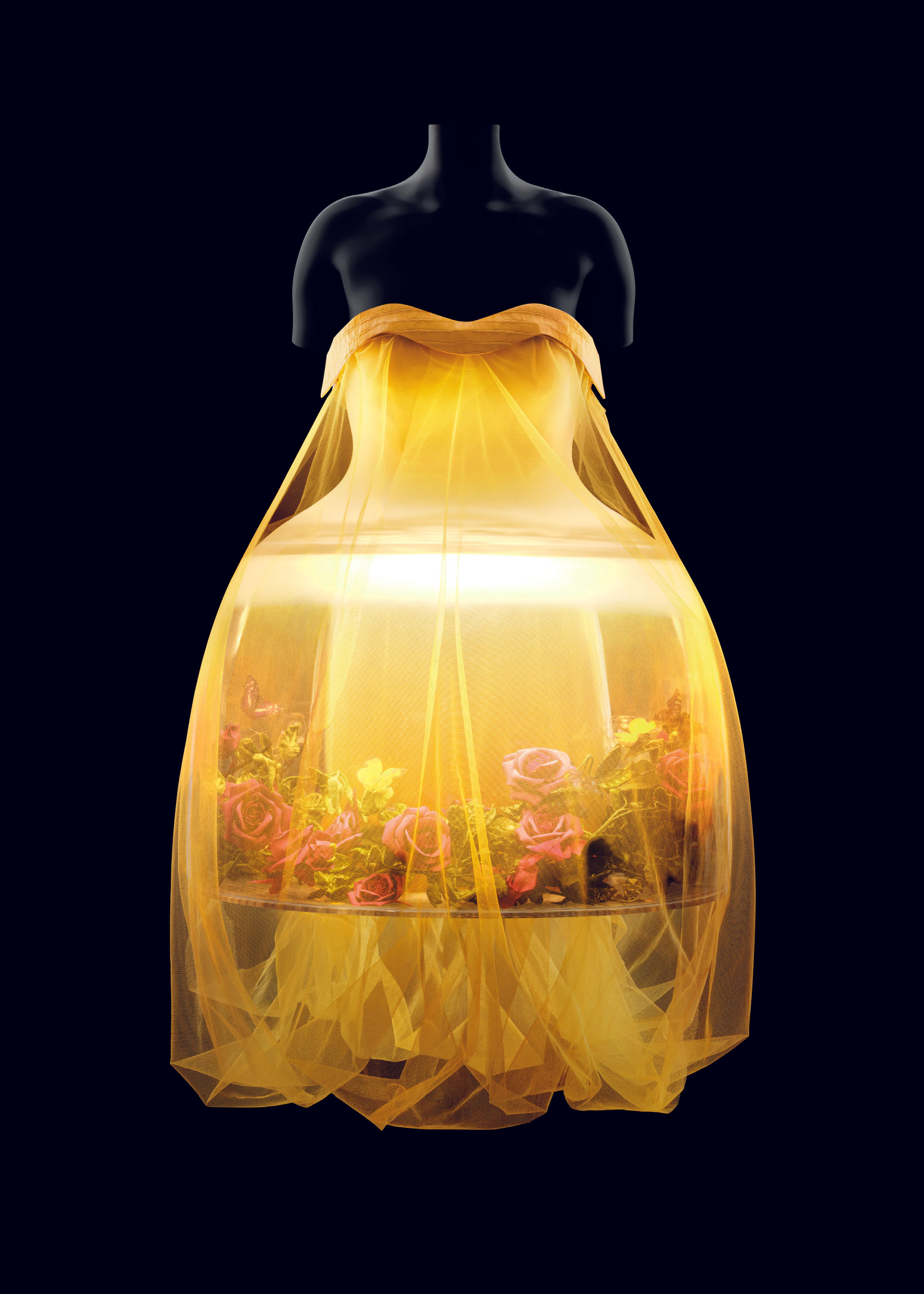Evening coat
Evening coats, wraps, and mantles of the 1910s were opportunities for lavish embellishment. Their draped, kimono-like construction, composed of large, relatively uncut lengths of fabric, often accommodated expansive fields of applied ornament in long continuous bands. In this dramatic example a motif of stylized roses popularized by the designs of Raoul Dufy for Paul Poiret, the preeminent couturier of his day, is rendered in black on a white ground. A contrasting wide band controlling the back hem and train is embellished with a white-on white centered spray of roses in a similar style. The highly graphic patterning described in the densely applied beading is evidence not only of the bold and dramatic effects characteristic of the period, but also of the miraculous recovery of the French luxury trades after the horrific disruption of World War I.
Although this wrap is typical of the late 1910s in its essentially linear drape-the result of the weight of the beading on a sheer silk gauze ground-its cocoonlike embrace and severely pegged hem also evoke the exotic themes introduced by Serge Diaghilev's Ballets Russes, which had inspired Poiret's languid odalisque styles of a decade earlier.
Although this wrap is typical of the late 1910s in its essentially linear drape-the result of the weight of the beading on a sheer silk gauze ground-its cocoonlike embrace and severely pegged hem also evoke the exotic themes introduced by Serge Diaghilev's Ballets Russes, which had inspired Poiret's languid odalisque styles of a decade earlier.
Artwork Details
- Title:Evening coat
- Date:ca. 1912
- Culture:French
- Medium:silk, glass
- Credit Line:Purchase, Isabel Shults Fund, 2001
- Object Number:2001.374.1
- Curatorial Department: The Costume Institute
More Artwork
Research Resources
The Met provides unparalleled resources for research and welcomes an international community of students and scholars. The Met's Open Access API is where creators and researchers can connect to the The Met collection. Open Access data and public domain images are available for unrestricted commercial and noncommercial use without permission or fee.
To request images under copyright and other restrictions, please use this Image Request form.
Feedback
We continue to research and examine historical and cultural context for objects in The Met collection. If you have comments or questions about this object record, please contact us using the form below. The Museum looks forward to receiving your comments.
